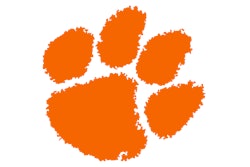Conduct that left an ice hockey player injured did not constitute willful and wanton behavior.
It is generally accepted that during certain athletic activities, there is always going to be a permissible amount of physical contact between participants. However, when one participant is injured as a result of physical contact, a negligence lawsuit can ensnare the individual who caused the injury, the game's sponsoring organization, coaches and even referees - as Karas v. Strevell [227 Ill. 2d 440; 884 N.E.2d 122 (2008)] demonstrates. While playing ice hockey, Benjamin Karas was checked from behind by two athletes representing the Naperville Central Redhawk Hockey Association. Karas fell to the ice and his head struck the boards, leaving him with serious neck and head injuries. In checking Karas from behind, the players had violated one of the rules promulgated by Amateur Hockey Association Illinois Inc., of which both teams involved were members. To reinforce the rule against body-checking from behind, the hockey association required each player to have the word "STOP" sewn on the back of his jersey. As a result of Karas' injuries, Benjamin's father filed a lawsuit against the two opposing players, alleging that their conduct was negligent and showed a willful and wanton disregard for Benjamin's safety. In addition to the opposing players, he also sued the players' team, the hockey association and the officials who refereed the game, claiming that they had all acted negligently in causing his son's injuries when they failed to enforce hockey safety rules sufficiently, and that this failure led to, and perhaps encouraged, the opposing players' improper conduct. In examining the legal issues, the Supreme Court of Illinois reviewed each group of defendants individually: • Player v. Player. In general, the court held, every person owes a duty of ordinary care to guard against injuries to others. If a person breaches this duty, he or she is deemed negligent and may be held financially liable if his or her conduct proximately causes injury to another. The court, however, citing Pfister v. Shusta [167 Ill. 2d 417, 657 N.E. 2d 1013, (1995)], created an exception to this rule for participants engaged in contact sports. Under this exception, a participant in a contact sport may be held liable for conduct that injures a co-participant only if the conduct is deemed intentional, or willful and wanton. In creating the exception, the court tried to strike an appropriate balance between a) society's interest in limiting liability for injuries resulting from physical contact inherent in a contact sport, and b) society's interest in allowing recovery for injuries resulting from willful and wanton or intentional misconduct by participants. However, in trying to apply the exception to the current case, the court held that doing so within the context of full-contact sports such as ice hockey - in which physical contact between players is not simply an unavoidable byproduct of vigorous play, but a fundamental part of the game - was problematic. For example, although the court held that body checking an opponent evinces a conscious disregard for the safety of the person being struck, such conduct is an inherent, fundamental part of the sport. To determine otherwise, the court held, would have a pronounced chilling effect on full-contact sports. If liability could be established every time a body check resulted in injury, the game of ice hockey as we know it would cease to be played. Since none of the facts presented in Karas demonstrated that any of the opposing players acted totally outside the range of ordinary activity associated with ice hockey, the court rejected Robert Karas' complaint against the players. • Player v. Organization. As for the direct negligence claim against the organizational defendants (Redhawk Hockey and Amateur Hockey Association Illinois), the court held that the only way such an action could survive is if Robert Karas could show that either organization actively encouraged violation of the rule against body checking from behind. However, since there was no evidence to support such a conclusion, especially since all the players were wearing a "Stop" warning on the back of their jerseys in an effort to enforce the rule, the court dismissed the claims against the two organizations. Most lawsuits against organizations are tried under the theory of vicarious liability. Under vicarious liability, an organization can be found liable for damages if the injured athlete can prove that an employee, in this case a coach or referee, was negligent. The negligent conduct of the employee is transferred to the corporate entity as long as the employee was acting within the scope of the employee's responsibility and authority, and if the act was not grossly negligent, willful and wanton, or intentional. • Player v. Coach. Generally, coaches owe their players a duty to provide proper and adequate supervision, training and instruction. The amount of supervision required - which includes warning of any dangers inherent in the activity; communicating and enforcing rules and regulations; instructing participants about how to properly perform the activity; monitoring the behavior of the participants; and rendering first aid - will depend on the activity and the skill level of the participants. To impose greater duty on coaches, the court ruled, would harm the sport or cause it to be changed or abandoned. Citing the Supreme Court of California's decision in Kahn v. East Side Union High School District [31 Cal. 4th 990, 75 P.3d 30 (2003)], the court held that as long as a coach does not increase the risk of harm inherent in learning or playing the sport by intentionally injuring the athlete or engaging in reckless conduct, the courts will generally not find any liability. Applying this standard, the court rejected Robert Karas's negligence claim against the coach. • Player v. Referee. As it did with coaches, the court noted that referees have a legal duty to supervise the action and enforce the rules - especially those related to safety - of the game on the field, court or ice. Therefore, the court concluded that Robert Karas must prove that the referees engaged in conduct totally outside the range of the ordinary activity involved with officiating the sport. Even though the referees did not prevent the opposing players from violating the rule against checking from behind, the court concluded that they were still not liable. In contact sports, the court held, rules violations are considered an inherent, anticipated and unavoidable risk of participating. In addition, the court noted that coaching and officiating involve subjective decision-making that often occurs in the middle of a fast-moving game. It is difficult to observe all the contact that takes place during an ice hockey game, and it is difficult to imagine activities more prone to second-guessing than coaching and officiating. Therefore, the court ruled that applying an ordinary negligence standard to these decisions would open the door to a flood of litigation and would impose an unfair burden on organized sports. While the decision of the Supreme Court of Illinois reinforces the theory that an athlete who is injured by a co-participant while playing a contact sport may only recover damages if the injury was the result of willful and wanton or intentional conduct, Karas directly affects only similar cases in Illinois. Yet, the court's decision also illustrates that the standard of care applied by the courts is different depending on the sport or activity played. Specifically, athletes injured in non-contact sports do not assume the same risks as athletes in full-contact sports. Even in full-contact sports, however, athletes are not outside the laws of society. If a participant is injured intentionally, or as a result of reckless conduct, the offending opponent may still be liable for any injuries caused.
































